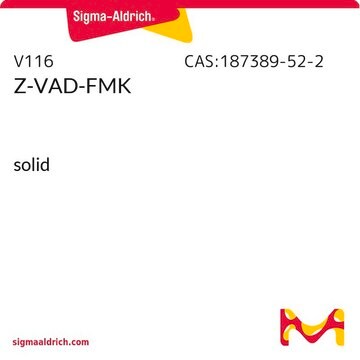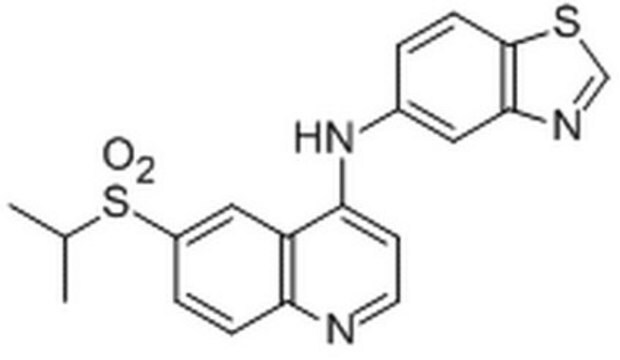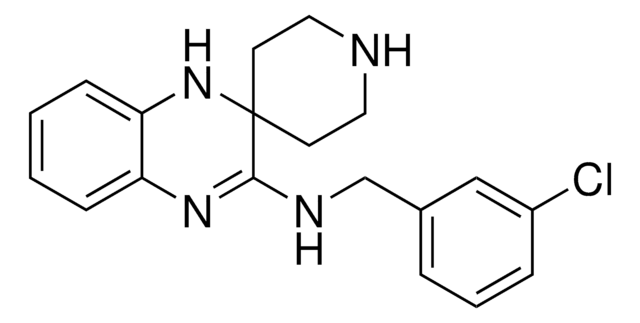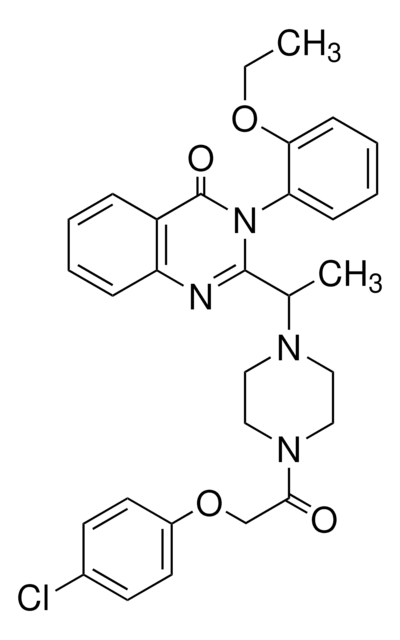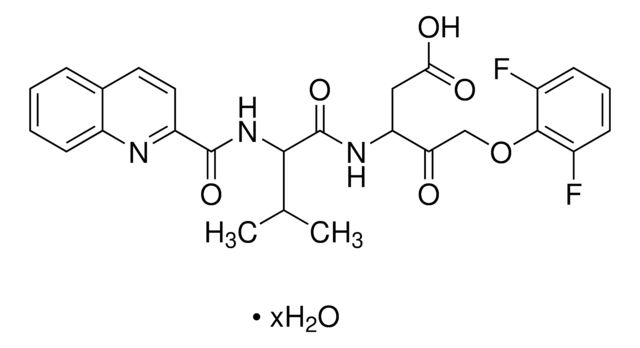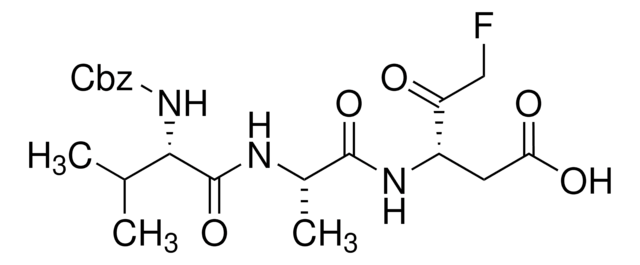N9037
Necrostatin-1
≥98% (HPLC), powder, necroptosis inhibitor
Synonym(s):
5-(1H-Indol-3-ylmethyl)-3-methyl-2-thioxo-4-Imidazolidinone, 5-(Indol-3-ylmethyl)-3-methyl-2-thio-Hydantoin, MTH-DL-Tryptophan
About This Item
Recommended Products
Product Name
Necrostatin-1, ≥98% (HPLC)
Quality Level
Assay
≥98% (HPLC)
form
powder
solubility
DMSO: >10 mg/mL
storage temp.
−20°C
SMILES string
CN1C(=S)NC(Cc2c[nH]c3ccccc23)C1=O
InChI
1S/C13H13N3OS/c1-16-12(17)11(15-13(16)18)6-8-7-14-10-5-3-2-4-9(8)10/h2-5,7,11,14H,6H2,1H3,(H,15,18)
InChI key
TXUWMXQFNYDOEZ-UHFFFAOYSA-N
Application
Biochem/physiol Actions
Features and Benefits
Storage Class Code
11 - Combustible Solids
WGK
WGK 3
Flash Point(F)
Not applicable
Flash Point(C)
Not applicable
Personal Protective Equipment
Choose from one of the most recent versions:
Already Own This Product?
Find documentation for the products that you have recently purchased in the Document Library.
Customers Also Viewed
Related Content
Apoptosis, or programmed cell death (PCD), is a selective process for the removal of unnecessary, infected or transformed cells in various biological systems. As it plays a role in the homeostasis of multicellular organisms, apoptosis is tightly regulated through two principal pathways by a number of regulatory and effector molecules.
Our team of scientists has experience in all areas of research including Life Science, Material Science, Chemical Synthesis, Chromatography, Analytical and many others.
Contact Technical Service
